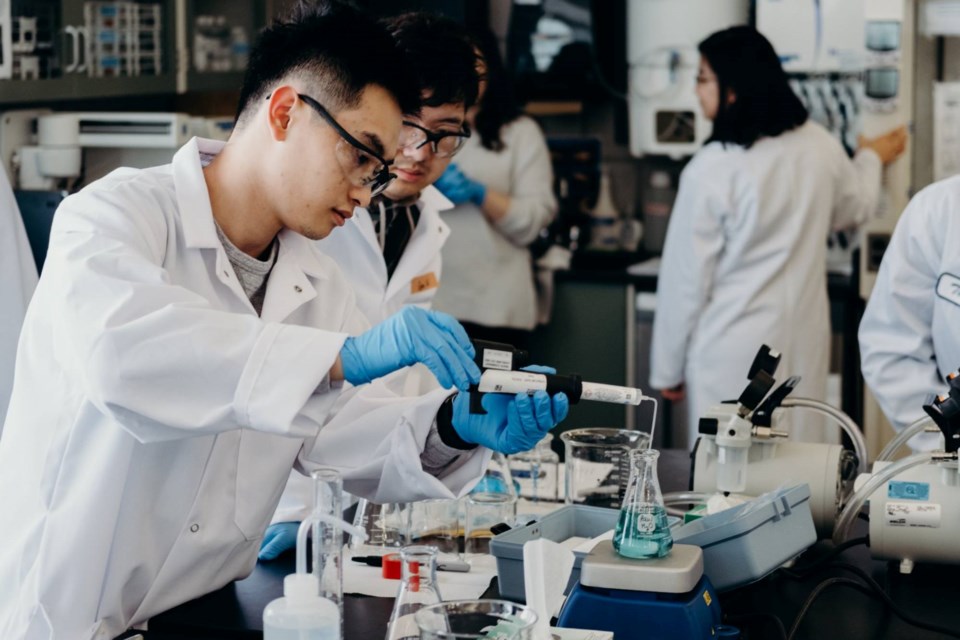Across Canada, 29 Indigenous communities remain under a boil water advisory.
Before residents in those communities can brush their teeth, drink a glass of water, cook food, or have a shower, they have to put water in a pot, bring it to a rolling boil, and let it cool — just so they don’t get sick performing many of these everyday activities.
Under a commitment by the federal government to permanently eliminate all boil water advisories, 132 have been lifted in the last seven years.
But until every Canadian has access to clean, potable drinking water, there is still much work to do, said Steph Romaniuk, faculty in the School of Environmental Studies at Canadore College in North Bay.
“You can see we’d have lots of potential impacts and conveniences” from boil water advisories, Romaniuk said during Canadore’s recent Sustainability Summit, held May 31 to June 1.
“We take for granted that we can just go somewhere, turn on the water fountain, turn on the tap. It’s crazy to think that in our country we have places that that’s not so.”
Lots of work goes into ensuring that a community has access to clean drinking water, but much of the on-the-ground responsibility falls to water operators.
Typically coming under one of four categories — drinking water operators, wastewater operators, limited system operators, and water quality analysts — these are the people who are certified to monitor our water systems, test for water quality, and fix any problems that crop up before they become bigger issues.
At Canadore, Romaniuk is responsible for training the next generation of water operators.
Becoming fully qualified is a rigorous, multi-faceted process that requires seven years of classroom learning combined with hands-on experience.
“It’s like a Red Seal trade, really, becoming a water operator — like becoming a plumber or an electrician,” Romaniuk said. “Actually, it’s good to be able to do both of those if you’re going to be an operator.”
Students begin by taking their operator-in-training (OIT) licence exam, which qualifies them to perform regular operating functions at a water or wastewater treatment plant; however, they cannot be an overall responsible operator.
After one year of experience as an OIT, they can then proceed to their Class 1 operator licence, as long as they meet all the educational and training requirements and pass a certification exam.
As they acquire more education and experience, operators can work their way up the system, capping at a Class 4 designation each for water and wastewater operators.
“It’s a really important field,” Romaniuk said. “It’s always evolving; it’s always changing. It’s really dynamic.”
Certification requirements for water operators weren’t always so stringent, and it took a tragedy of provincial significance to elicit change.
In 2000, in the southern Ontario town of Walkerton, more than 2,000 people became seriously ill, and six died, following an E. coli outbreak in the community’s water supply.
After a heavy rainfall, an aquifer became contaminated with bacteria from manure collected at a nearby farm, and residents developed gastroenteritis as a result.
From the inquiry that followed, the federal government mandated strict new water management requirements, one of which was the certification of operators.
As a legacy of that time, the town hosts the Walkerton Clean Water Centre, which offers training to operators and operating authorities, as well as educational information to the public. To date, it’s trained more than 75,000 people across Ontario, including operators in the province’s 133 First Nations.
“It’s a great centre and a great resource,” said Romaniuk, who regularly travels to the site with students for professional development activities. “It’s kind of nice to see a good outcome came out of that tragedy.”
Despite the progress that’s been made, First Nations in Canada are still disproportionately impacted by boil water advisories.
More than 80 per cent of water treatment failures in those communities are attributed to equipment malfunction and process failures, Romaniuk noted. But a new initiative is starting to make positive change on that front.
Water Movement, created by Calgarian Bita Malekian in 2021, is a non-profit organization of university students and industry professionals working to achieve clean drinking water for all Indigenous communities.
It connects Indigenous water operators with other industry experts to help them troubleshoot problems, develop best maintenance practices, and share knowledge.
Its key feature is a video library with hundreds of step-by-step videos that guide water operators through common issues and how to fix them.
There are currently 4,900 users from 24 countries on the platform, with more joining all the time.
Since learning of Water Movement through a student, Romaniuk has filmed a number of videos for the library, which Malekian said are “some of the most popular” on the site.
For Romaniuk, the collaboration provides an extra measure of security in an industry of unsung “heroes” that don’t always get the recognition they deserve for the important role they play.
“All these operators that we have working for us, I didn’t hear once during the pandemic about the front-line water operators that are keeping our facilities running,” he said. “It’s a selfless kind of job, but really important.
“Some of our students realize that, and they want to be a part of it, too.”
